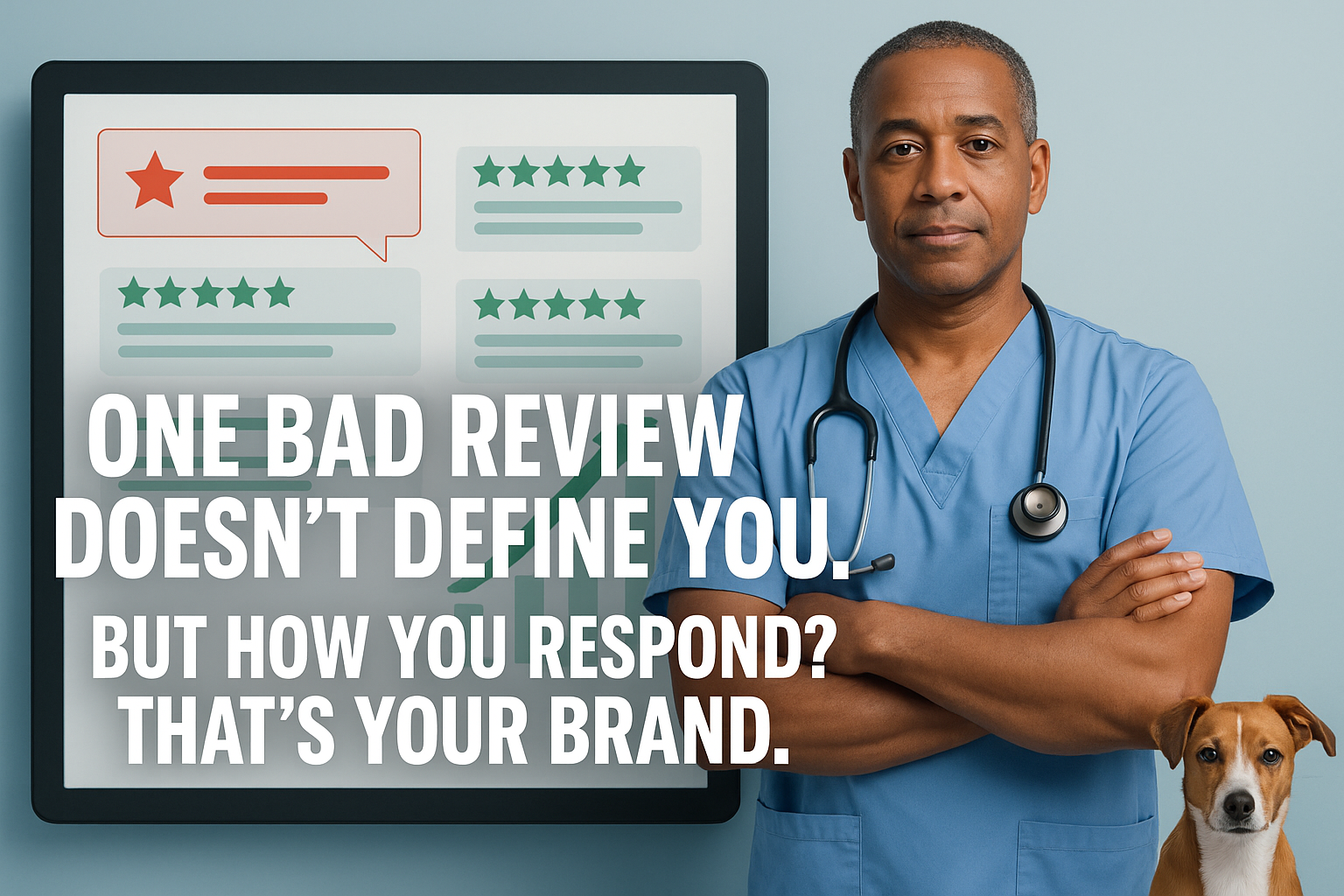Key Takeaways
- Negative reviews are not the end—they’re an opportunity to showcase your professionalism and commitment.
- Responding quickly and respectfully can de-escalate tension and build community trust.
- Never delete or argue with a reviewer; instead, acknowledge and address concerns constructively.
- Use templates and team training to standardise responses while preserving authenticity.
- Monitor patterns in feedback to uncover operational improvements.
- Encourage satisfied clients to share their experiences—proactively shape your clinic’s online reputation.
- Leverage automation to alert you of new reviews and streamline follow-ups.
- A well-handled negative review can turn a critic into a promoter and influence new client decisions.
Have you ever felt that one bad review could undo years of excellent service at your veterinary clinic?
It’s a concern I hear often—and for good reason. In an age where pet owners Google everything, online reviews have become one of the most influential trust signals in the decision-making process. A 2023 BrightLocal survey showed that 98% of consumers read online reviews for local businesses, and veterinary clinics are no exception.
Over the years, working with clinics, I’ve seen firsthand how reputation management can make or break a practice. But here's the good news: knowing how to respond to negative reviews of your veterinary clinic isn't just a defensive tactic—it’s a strategic marketing opportunity.
Let me walk you through what I’ve learnt, what works, and why it matters.
Reputation Management Isn’t About Perfection—It’s About Trust
I once worked with a thriving animal hospital that had dozens of glowing 5-star reviews… until one weekend, a 1-star review popped up. The reviewer accused the staff of being “uncaring” after a pet emergency wasn’t prioritised. Within hours, the clinic owner was in full panic mode. Understandably so.
But here’s what we did differently: instead of reacting emotionally, we crafted a calm, empathetic, and transparent response that:
- Acknowledged the client’s distress,
- Clarified the triage process during emergencies,
- Offered a private conversation offline.
The result? The reviewer never replied again—but new clients mentioned how professional the response was when they visited the clinic. Some even cited it as the reason they booked.
That’s the power of knowing how to respond to negative reviews of your veterinary clinic—it’s not just about damage control. It’s about reputation amplification.
Speed Matters, But So Does Tone
According to a Harvard Business Review study (2018), businesses that respond to reviews within 24 hours see 12% more reviews and higher overall ratings. But a quick response doesn’t mean a rushed one. Tone is everything.
Clients aren’t just reading what you say; they’re feeling how you say it. A defensive tone can escalate tensions, while a thoughtful reply demonstrates maturity and care. If you wouldn’t say it face-to-face in the waiting room, don’t type it online.
Don’t Delete—Demonstrate
One of the biggest mistakes I see clinics make is deleting negative reviews or trying to flag them as spam. Unless the review contains hate speech or clear violations of platform guidelines, leave it up.
Why? Because transparency builds trust. A study by Spiegel Research Centre (2017) found that purchase likelihood peaks when ratings are between 4.0 and 4.7 stars—a perfect 5.0 often seems “too good to be true”.
When you demonstrate how your clinic responds under pressure, you’re showing prospective clients what kind of experience they can expect if something ever goes wrong. That’s far more valuable than a squeaky-clean score.
Turn Feedback into Operational Gold
In one veterinary practice I consulted, I noticed a pattern: several negative reviews mentioned long wait times. It wasn’t something they’d previously prioritised. After digging in, we discovered a bottleneck during the morning hours.
They implemented a new staggered scheduling protocol and began informing clients about potential delays in advance. Not only did the complaints stop, but new reviews started mentioning “efficient service” and “transparency”.
So yes, knowing how to respond to negative reviews of your veterinary clinic is important—but so is listening to those reviews. They often highlight friction points you didn’t know existed.
Automate the Awareness—Humanise the Response
Technology is your friend here. Platforms like GoHighLevel allow you to set up review alerts, automate requests for client feedback, and segment your follow-ups. But automation is only half the equation. The response still needs to feel human.
Use pre-approved templates for tone and structure, but tailor each reply to the specific complaint. Don’t just say, “We’re sorry you had a bad experience”—demonstrate that you read their review and care enough to respond with sincerity.
Stack the Deck: Encourage Positive Reviews
The best way to drown out a negative voice is with a chorus of positive ones. After every successful visit, ask your team to gently remind clients to leave a review. Better yet, send a follow-up SMS with a direct link to your Google profile or Facebook page.
One of my clients made this part of their checkout script and doubled their five-star reviews in 90 days. It’s not magic—it’s the method.
Conclusion: Turning Criticism into Credibility
Negative reviews are inevitable in any service-based business. But when handled with care, clarity, and professionalism, they become a strength rather than a setback.
Mastering how to respond to negative reviews of your veterinary clinic means positioning your practice not only as a provider of care—but as a brand that listens, adapts, and leads with empathy.
And in today’s marketplace, that is what sets exceptional clinics apart.
